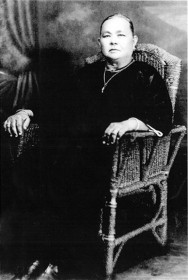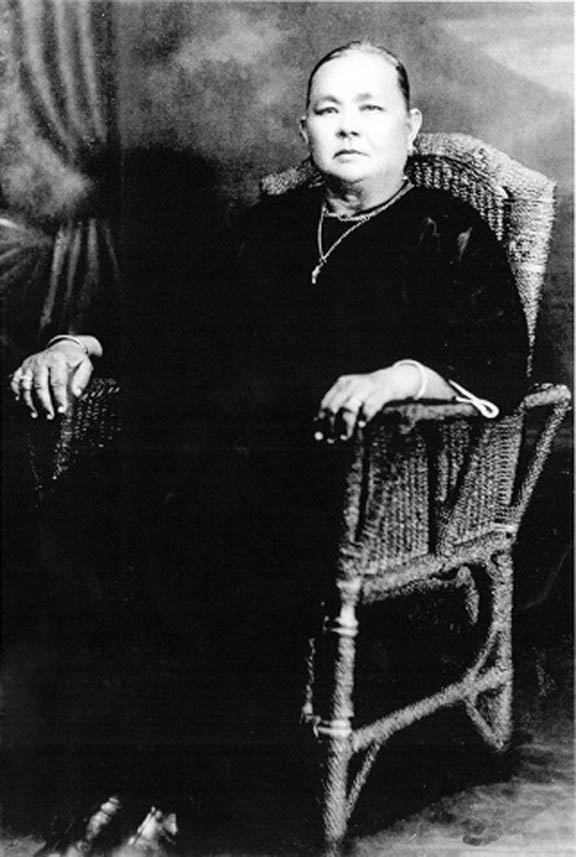Introduction
It was 150 years ago, precisely on March 11, 1860 that the ship “Whirlwind”, some 78 days after leaving Hong Kong, docked at Port Georgetown with 371 Chinese immigrants on board including 56 women and 4 girls. The first group of Chinese immigrant women had arrived some seven years after the beginning of the “Chinese Experiment” – the use of Chinese indentured labour on the sugar plantations. This new group of immigrant labour the local plantocracy hoped, would help to solve their labour problems and in so doing not only ensure the survival of the sugar economy but also the survival of civilization in the colony of British Guiana. From then until the end of Chinese immigration to British Guiana in 1879, scores of women arrived and lived and worked on and off the plantations. The subject of this article is a brief look at the situation of 19th century Chinese immigrant women and the female descendants of the Chinese immigrants in both traditional and non traditional occupations.
 The situation of Chinese
The situation of Chinese
immigrant women
Between 1853 and 1879 some 13,541 Chinese immigrants came to British Guiana about 17% of which were women. Consequently, despite the several mechanisms put in place by the Colonial Office, like other immigrant groups, especially East Indians, there was a perennial shortage of Chinese women. As an incentive to recruit women it was agreed that Chinese females would not be compelled to work on the plantations to which they were allotted. While in the early years, some Chinese immigrant women did work as weeders on a few plantations and others did some domestic work, for the most part, they stayed in the home and took care of their families. They were therefore not exposed to the same brutal work regime as East Indian women. Additionally, despite the paucity of their numbers, they did not become the victims of uxoricide as did their East Indian counterparts nor face the sexploitation on the estates and on “the other Middle Passage” as those women did.
The society from which Chinese immigrant women came, regardless of their class, was one in which boy children were prized more than girls and the system of patriarchy which dominated the lives of women elsewhere cloistered them in the private sphere of the home and family, subordinate and submissive first to the men of their households and later to their husbands to whom they were often betrothed as children. However, their reasons for migrating, the conditions associated with the indentureship system on the sugar plantations of British Guiana combined with the small ratio of women to men undermined some of the customs and traditions of the home country. Here, not only the immigrant women but more particularly their daughters were cherished and pampered for their potential for improving the status of the family through strategic marriages. An example of what the fate of a young Chinese woman could be is described thus by Margery Kirkpatrick in her book:
Sic You Chea,..was the daughter of Mr. Wong who gave her to Lee-A-Tak, the Chinese money lender, as collateral security for his loan. This was no unheard of occurrence, as daughters were regarded as having been born to a family to marry advantageously or otherwise assist in increasing the family coffers… When she was fifteen, she was purchased by one Man Son Hing of Stabroek, who wanted a beautiful, presentable wife- one who could converse and take her place in society- for his son.
In today’s parlance the above would be described as sheer exploitation. However, the changing needs of the colonial society in which Chinese immigrants found themselves led to changes in the status of women. Sue-A-Quan posited that many immigrants had become wealthy but sought recognition and status within the wider community, specifically, the middle class. It was dominated by the Creoles for whom success in the professions, like law and medicine rather than wealth seemed to open doors. The first step in the process of creolisation was acquiring the necessary education. It was the goal therefore that at least one child would be given the necessary education to ensure that someone of the next generation gained the honour of a more respected status in society. Many women were given equal opportunity with men to acquire an education. It is against this background that occupations of women descendants will be discussed.
Traditional and non
traditional occupations
Like women elsewhere where the precepts of patriarchy determined the place of women in society, the education that the female descendants of Chinese immigrants received fitted them mainly for jobs associated with nurturing, care of the home and the sick – teaching, nursing etc. Scores of girls attended the prestigious Bishops’ High School, St Rose’s and Mc Kenzie High School and several of them, after the middle of the last century were Guyana scholars. Scores of them, too numerous to list became teachers and University lecturers. For example, Marlene Kwok Crawford became headmistress at Covent Garden Secondary school, she is also author of the book Scenes from the History of the Chinese in Guyana from which much of the information for this section has been drawn. Ada Akai in 1974 became Deputy Head of male dominated Queen’s College and Stella Elisabeth Lowe Principal of Central High School. In the other traditional field of nursing one of the most outstanding women was Alice Fung-A-Ling who began by studying medicine but later switched to nursing and became matron at Best Hospital .in 1921. Doreen Milner born in 1921, became secretary for the Government Information Service, Secretary to the first Chairman of the Public Service Commission and later became the first woman Sergeant in the very non-traditional occupation of the Guiana Police Force
Perhaps the most demonstrable sign of the successful creolisation of the female descendants of the original immigrants as well as their changed status in society was their relatively successful participation in beauty pageants and several sports disciplines. In the case of the former, Rosalind Fung was Miss Guyana in 1956 and also won the contest among the three Guianas. This earned her the right to represent the three countries at the Miss Universe. Ms Nancy Lam was also a Miss Guyana while her daughter Amanda Jardim had that honour in 1988. In the field of sport, female members of the same family dominated lawn tennis for several years Debbie Fung was the Ladies Singles Lawn Tennis Champion in 1984 and with her sister won the doubles championship in 1974, 1975, 1980 and 1983-1985. Diane Lee was Sportswoman of the year in 1986. Doreen Chow Wah was the 1968 Table Tennis champion and won the Caribbean Ladies Championship in 1970. Amanda Lee was an outstanding swimmer who won two gold medals at the Inter Guiana games in 1977.
Several women also excelled in several fields of medicine and law. One of the first among the women in medicine was Asin Ho-a- Hing who gained her medical degrees from the University of Edinburgh in 1911. Doreen Mook Sang too studied medicine at the same university while her sister Mayleen studied Dentistry in Canada. Michelle Ming graduated with a degree in Optometry from the University of Bradford. In the field of law, Suzette Mook Sang studied law at Middle Temple, London and qualified as an attorney of Law 1972.
Perhaps the most non-traditional of occupations in which women could become involved was and is in the world of business. Here too, the female descendants of Chinese immigrants put some cracks in that particular glass ceiling. Perhaps the most outstanding was Martha Fung Kee Fung nee Kwok. Born in January 1874 she married at age 17 and bore nine children. Daughter of a shop keeper, she became a very successful business woman herself. Her businesses included grocery, cake shop, retail spirit shop and rice mill. She also purchased two sugar estates. She epitomizes women, Margery Kirkpatrick described thus:” In many Chinese families in Guyana, it was the woman who was the driving force behind survival and success. They became matriarchs in the new world in a society that had been patriarchal in the Old World…”
Margery Kirkpatrick herself and her daughter Melanie McTurk are good examples of women descendants of Chinese immigrant who have cracked the glass ceiling. Proprietrix of Kirkpatricks’ Enterprise Ltd., and also Director in her husband’s business Professional Guard Service Ltd., she received the Medal of Service in 1984. She is also the author of the book From the Middle Kingdom to the New World from which some of the information for this article is drawn. Her daughter Melanie, a mother of two, is not only a Director in her parents’ companies but together with her husband has managed the Karanambu Cattle Ranch, is a soloist with the Woodside Choir and has worked with several NGOs.
The above is but a small sampling of the occupations of the women descended from the Female Chinese immigrants. However, given their small percentage in the total immigrant and current population, theirs is a story worth celebrating and cherishing.

